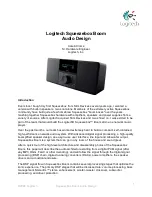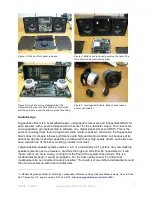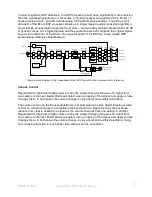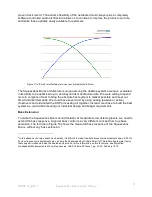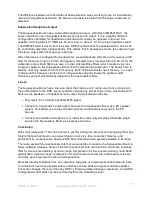
©2008 Logitech
Squeezebox Boom Audio Design
3
are going to use.
Power Amplifiers
High-performance class-D amplifiers power the woofers and tweeters and can easily deliver full
power to the speaker drivers with minimal distortion. We chose high-quality class-D amplifiers
for both woofers and tweeters. It may be a bit atypical to use class-D amplifiers for tweeters, but
we found there to be no significant sonic difference between the class-D and class-AB
amplifiers we tested.
Hardware/Mechanical Design
We designed Squeezebox Boom, working closely with our industrial and mechanical designers,
to simplify the assembly process and minimize risk, yet maintain top-notch audio performance in
an attractive package. The basic configuration is a sealed enclosure consisting of a rear cup-
shaped case and a front panel assembly, where the speaker wires pass from inside to outside
through a single rubber grommet.
Figure 2: Exploded schematic view of Squeezebox Boom assembly
Loudspeaker Drivers
The drivers we chose were custom developed by Logitech’s audio engineers to produce the
best sounding products while maintaining reasonable costs. The woofers are 3” long-throw
drivers with woven cloth cone and a rubber surround. They have a flat frequency response of
between 100 Hz and 4 kHz. The tweeters are
!
” soft-dome drivers that have a flat response of
between 1200 Hz and 20 kHz. There is almost no signal loss all the way to 20 kHz. The woofer-
tweeter crossover is set at 2 kHz.

